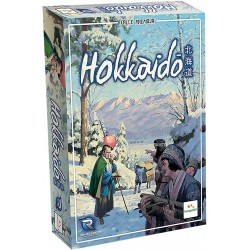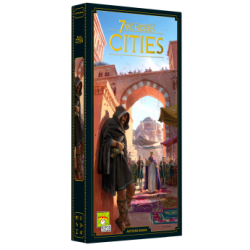No products in the cart.
Active filters
Windmill Valley
It’s the late 19th century, and more than 9000 windmills dot the landscape of the Netherlands, some of them purpose-built to dry the lowlands, called polders. In the polders between these windmills are fields filled with colorful tulips—the flower that once was a part of the turbulent history of the first financial bubble but is now simply a quintessential part of the Dutch landscape, especially on the famous Bloemen Route (or “Flower Route”).
7 Wonders 2nd Edition: Armada
Use your fleet to advance your civilization and do battle with everyone else.
Hokkaido
After establishing themselves in Honshu, the Lords and Ladies head north to Hokkaido. Beholding Hokkaido’s mountainous landscape, they see that expansion on this land will prove to be a greater challenge than before.
Hokkaido is the second map-building card game in the Nippon series, bringing new ideas and mechanisms to the first design Honshu. A game of Hokkaido consists of twelve rounds, each divided into two separate phases. Each player must expand their personal map to maximize their scoring possibilities.
Space Explorers
The conquest of space was one of the greatest achievements of the 20th century.
In 1957, the first satellite - named Sputnik 1- was launched into orbit. Just four years later, Yuri Gagarin was the first human in space, aboard the spaceship Vostok 1.
7 Wonders 2nd Edition: Leaders
Recruit leaders to further your civilization in this expansion to 7 Wonders.
7 Wonders 2nd Edition: Cities
7 Wonders: Cities, the second expansion for 7 Wonders, includes optional team rules, adds an 8th player (base game supports 7 players), a new type of card (black, representing the remains of cities), and new cards of old types (two new wonders: Petra and Byzantium, 3 new guild and 6 new leader cards). This expansion is more aggressive, with greatly increased interaction between players, who are still trying to score more points than anyone else.
[DAMAGED] Windmill Valley
It’s the late 19th century, and more than 9000 windmills dot the landscape of the Netherlands, some of them purpose-built to dry the lowlands, called polders. In the polders between these windmills are fields filled with colourful tulips—the flower that once was a part of the turbulent history of the first financial bubble but is now simply a quintessential part of the Dutch landscape, especially on the famous Bloemen Route (or “Flower Route”).







![[DAMAGED] Windmill Valley](https://kienda.co.uk/6094-home_default/windmill-valley.jpg)






![[DAMAGED] Windmill Valley](https://kienda.co.uk/6094-medium_default/windmill-valley.jpg)